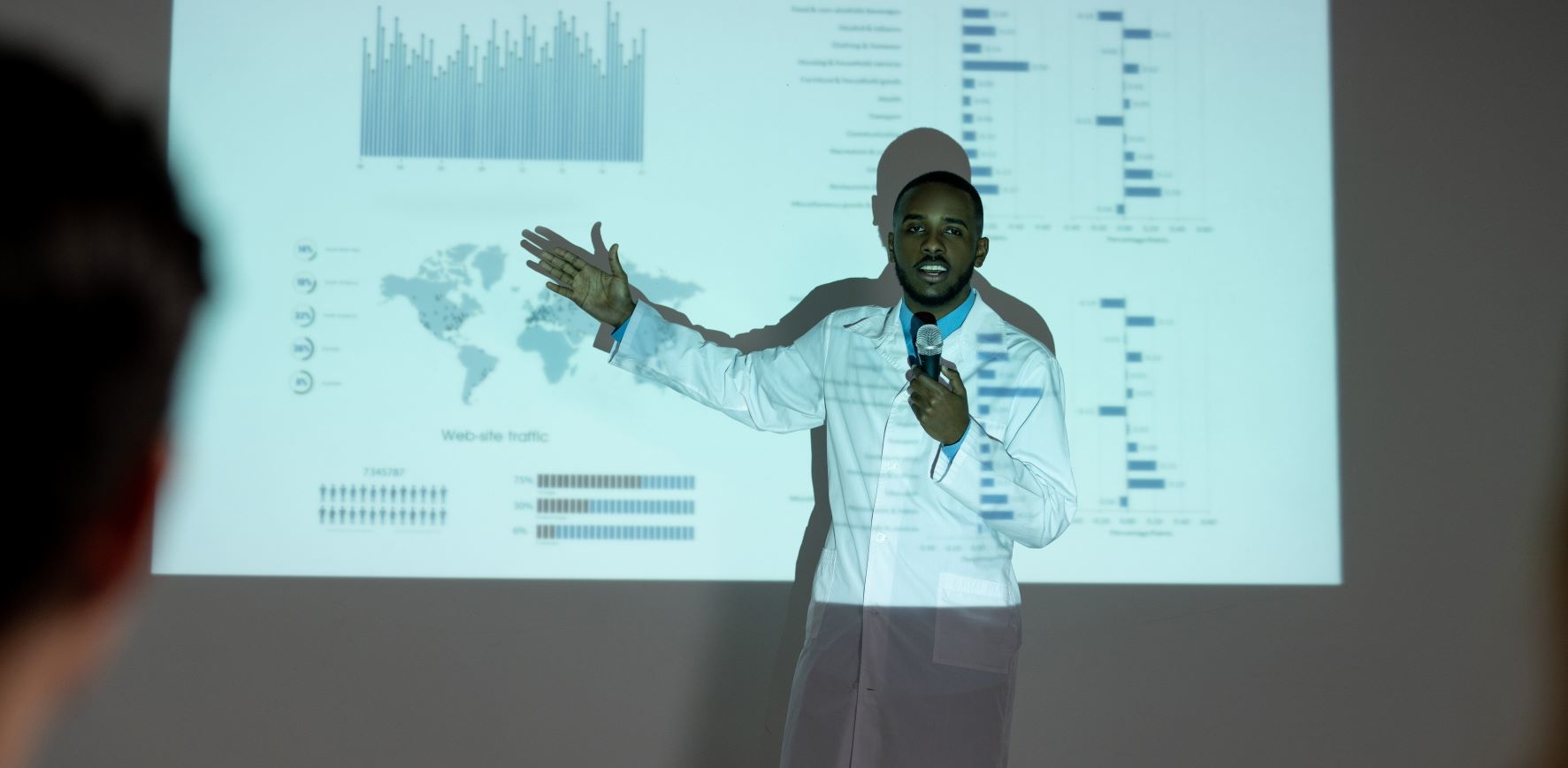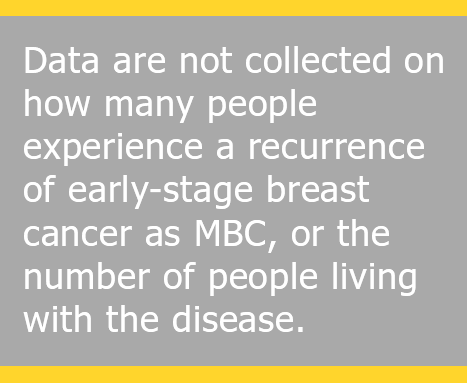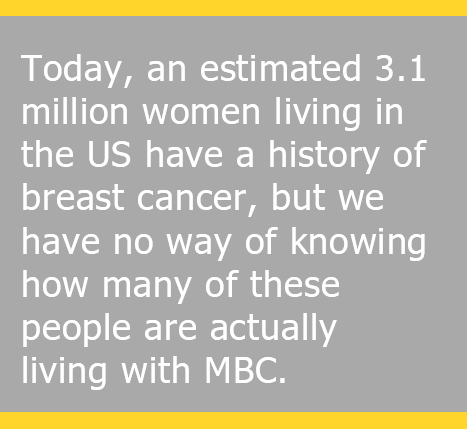Epidemiology
Better epidemiological data are needed on the number of early stage breast cancer patients who experience a recurrence and metastasis and on outcomes and length of survival after a metastatic diagnosis. Only very modest improvements in survival after a metastatic diagnosis have been observed, and not in all populations.
- Over the past few decades, the duration of survival after metastatic diagnosis has increased modestly—but only by a matter of months, not years. Hospital-based studies generally report a larger survival benefit than population-based studies.
- The modest increase in survival has been observed mainly in ER+ (estrogen receptor positive/hormone sensitive) metastatic breast cancer and/or HER2+ (human epidermal growth factor receptor 2–positive) metastatic breast cancer and is attributable to the wide use of targeted therapies. No survival benefit has been found in triple-negative metastatic breast cancer.
- The disparity in survival between black and non-Hispanic white women with the disease appears to be increasing. It is unclear how much of the observed disparity in outcome is related to access to care and socioeconomic concerns and how much is related to the greater incidence of triple-negative metastatic breast cancer in black women.
- The prevalence and incidence of patients with metastatic breast cancer is unknown. Also unknown is whether the number of relapsed metastatic breast cancer patients is increasing, decreasing, or staying the same. Without this information, we cannot accurately and effectively demonstrate the need for services or plan and fund the application of services.
- Disease trajectories, outcomes, and patient experiences for the different subtypes of metastatic breast cancer have not been well characterized.
- Many critical questions regarding the optimal treatment of the disease remain unresolved. It is imperative that the use, effectiveness, and impact of metastatic breast cancer treatments on the overall metastatic breast cancer population be understood.
- Despite existing research, we have no accurate estimate of how long MBC patients are likely to live. The factors underlying observed variability in median survival across the studies are unknown. Among the potential factors are differences in access to newer drugs (especially targeted therapies) and multiple lines of treatment, access to careful follow-up and expert palliative care to preserve optimal quality of life, and the presence of co-morbidities.
- Despite research demonstrating poorer outcomes for disadvantaged, underinsured populations overall, the true impact is unknown of socioeconomic factors on what treatments and care are available for metastatic breast cancer patients and, in turn, how this may affect duration of survival and quality of life.




